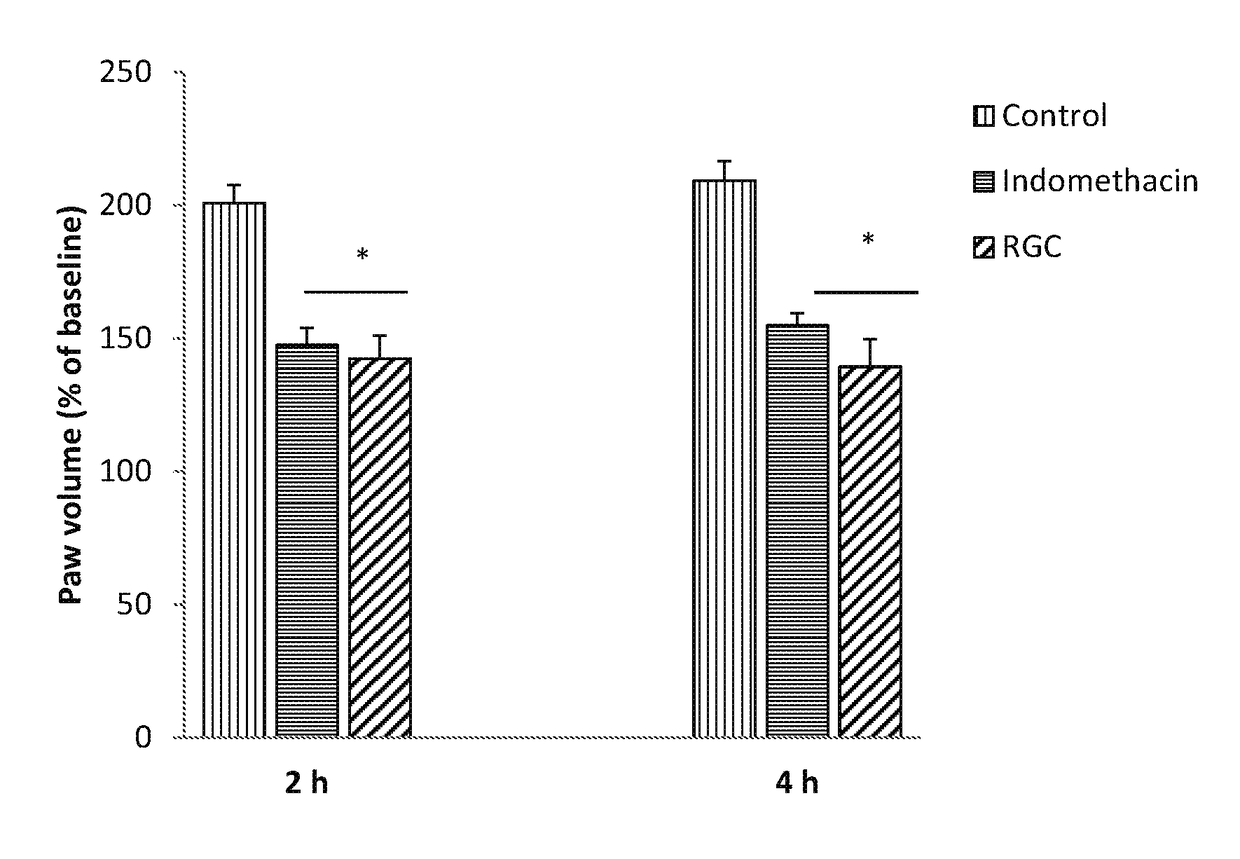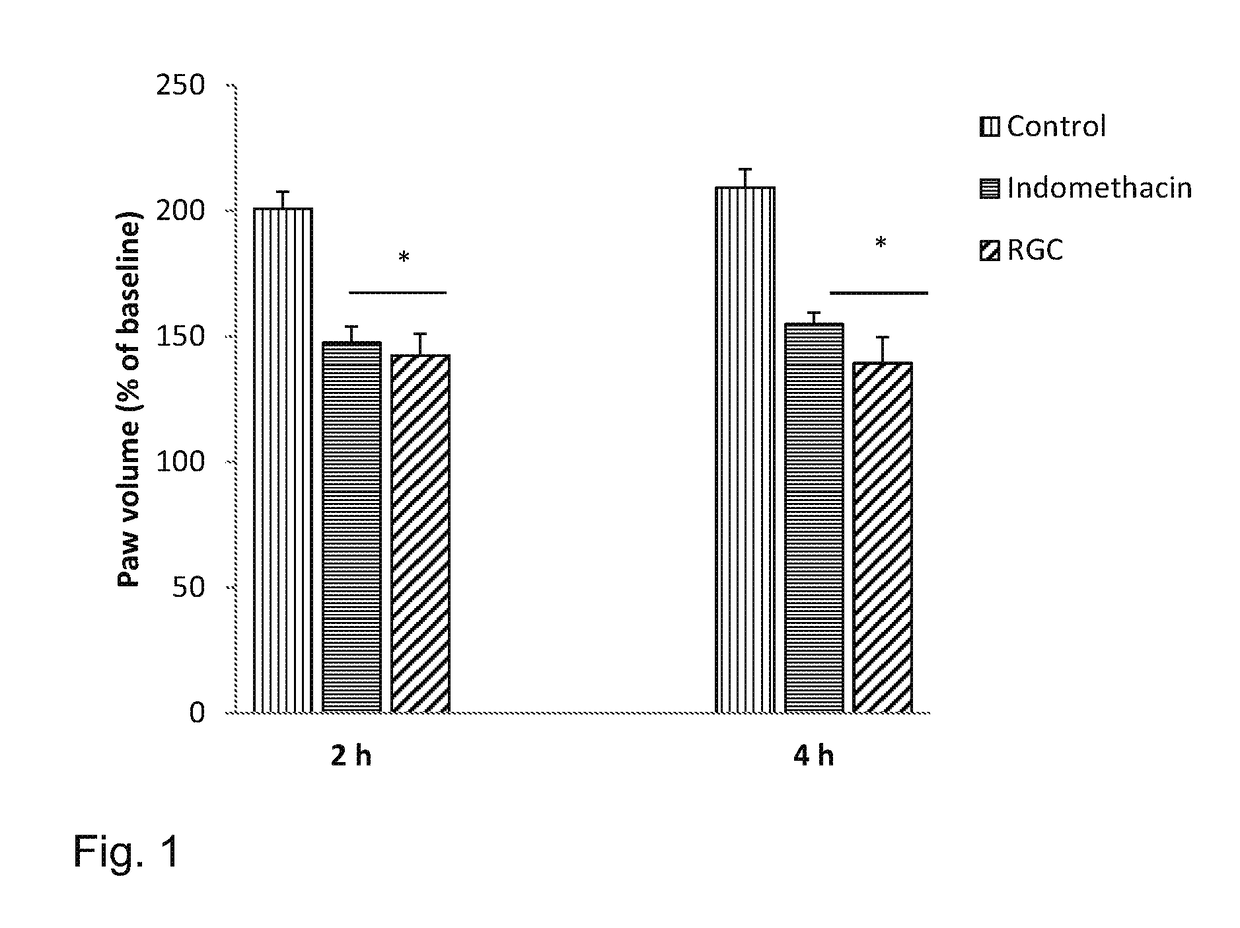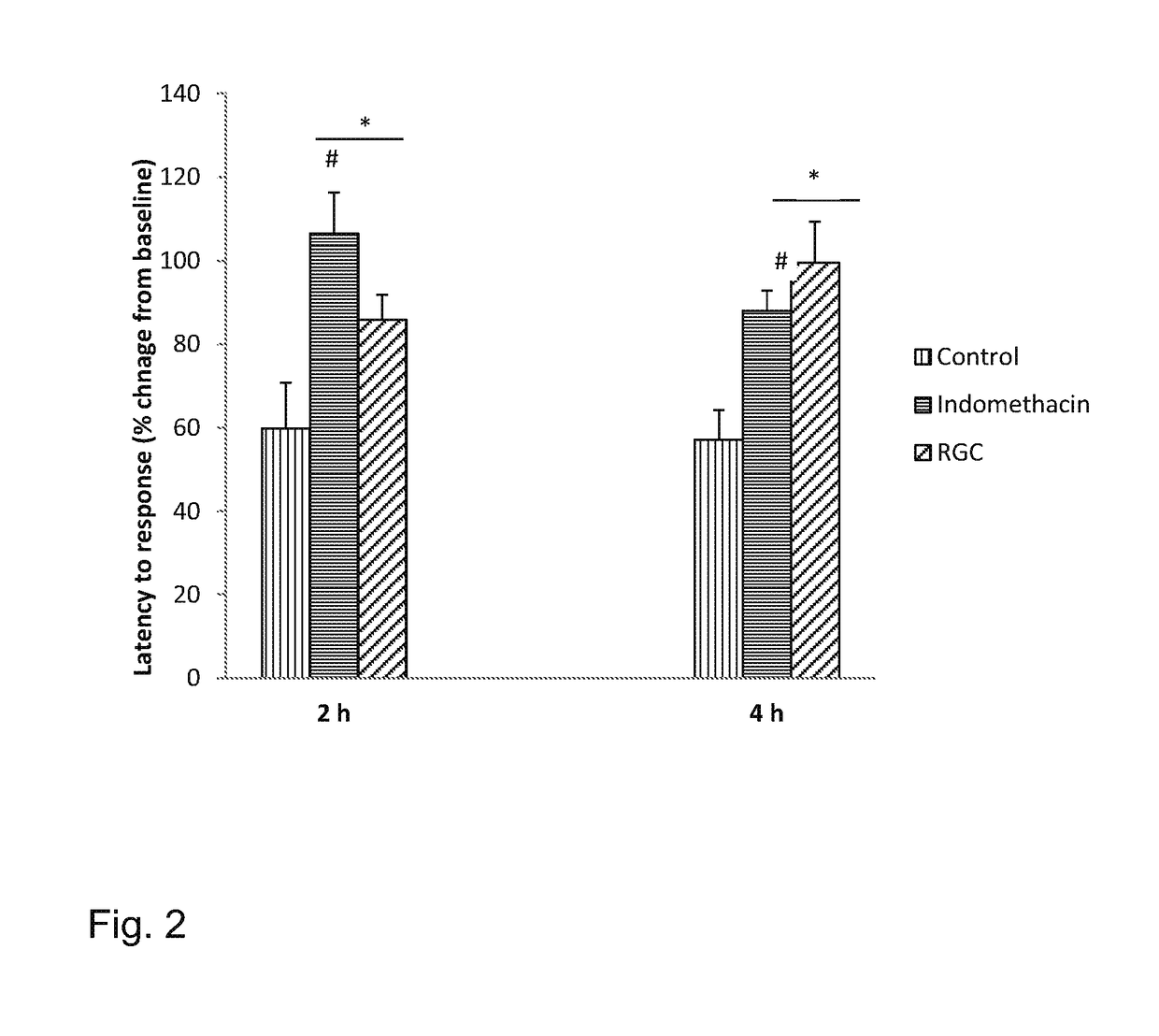Process for the large scale production of fruit cells and treatment of diseases with such cells
a large-scale production and fruit cell technology, applied in the field of large-scale production of fruit cells, can solve the problems of high amount of polyphenols, including resveratrol, and the inability to perform large-scale processes by the same means, and achieve the effect of reducing diastolic and systolic blood pressur
- Summary
- Abstract
- Description
- Claims
- Application Information
AI Technical Summary
Benefits of technology
Problems solved by technology
Method used
Image
Examples
example 1
Manufacturing-Industrial Level Scaling Up
1. Material and Methods
[0197]The production process encompasses propagation of grape cells in a progressively process having five stages. Starting from propagation of grape cells in an Erlenmeyer shake flasks for further propagation in a small and large scale disposable bioreactor. The critical key factor is maintaining a high level of the secondary metabolite, resveratrol in the cells during the propagation in different bioreactors scale. At the end of the last large scale stage of propagation, at the required biomass, the cells are harvested and dried to produce a fine pink-purple powder yielding a biomass of dried cells (RGC) which are used for different medicinal applications.
[0198]Grape Cell Line Formation
[0199]Calli from grape cross sections: Young grape bunches, 4 to 8 cm long, were harvested from field grown grape plants 20-50 days post anthesis and were thoroughly rinsed in running tap water. Green immature berries of the seedless gr...
example 2
The Effect of Medium Composition and Bioreactor Design on the Level of Resveratrol in Red Grape Cells Grown in Large Scale Bioreactor
2.1 Medium Composition
experiment 1
f Medium Composition on the Amount of Resveratrol in Red Grape Cells Grown in Erlenmeyer Shake Flask.
[0223]Red Grape Cells were grown in Erlenmeyer shake flask as described on Example 1, stage 1, in different medium compositions: MS, WP, WP+Casein, Gamborg B5. The results presented in Table 1, demonstrate that cells grown in the presence of Gamborg B5 medium produce approximately 4 to 15 fold higher resveratrol levels than cells grown in the presence of MS, WP and WP+Casein medium.
[0224]
TABLE 1TotalFresh weightResveratrolPolyphenolsMedium*g / Lmg / Lmg / LMS**12513.1143.4WP***13224.6208.9WP + Csaein1527.7126.2hydrolizateGamborg B5166141735*The data are the mean of at least two experiments**MS-Murashige and Skoog medium (Toshio Murashige and Folke K. Skoog in 1968)***WP—Woody Plant Medium (WP) (Lloyd and McCown, 1981)
PUM
| Property | Measurement | Unit |
|---|---|---|
| waist circumference | aaaaa | aaaaa |
| waist circumference | aaaaa | aaaaa |
| density | aaaaa | aaaaa |
Abstract
Description
Claims
Application Information
 Login to view more
Login to view more - R&D Engineer
- R&D Manager
- IP Professional
- Industry Leading Data Capabilities
- Powerful AI technology
- Patent DNA Extraction
Browse by: Latest US Patents, China's latest patents, Technical Efficacy Thesaurus, Application Domain, Technology Topic.
© 2024 PatSnap. All rights reserved.Legal|Privacy policy|Modern Slavery Act Transparency Statement|Sitemap



